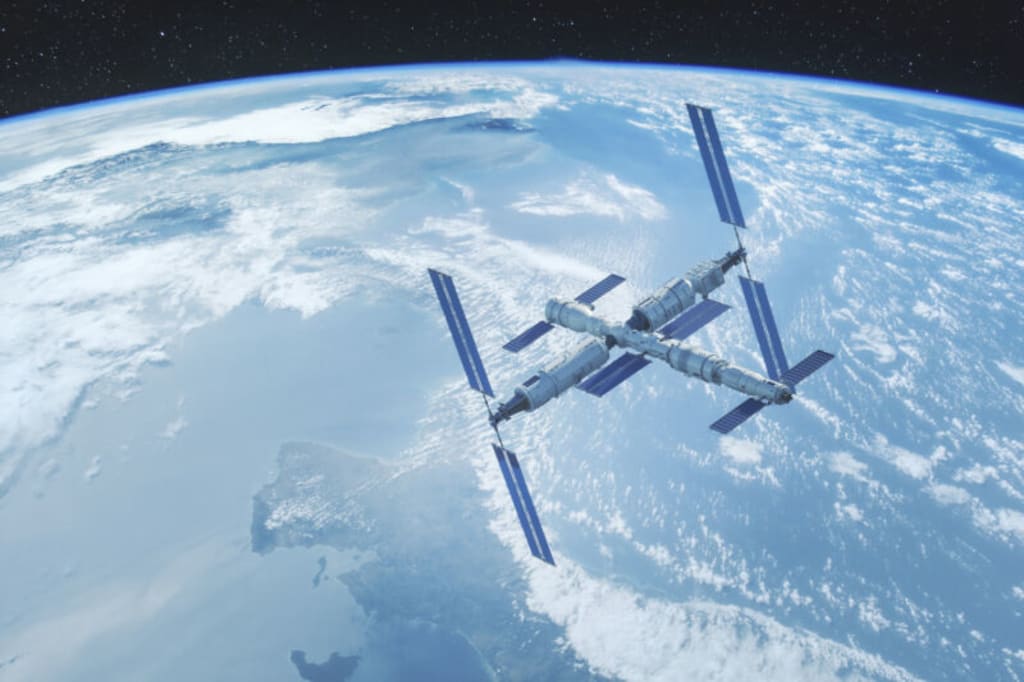China's Space Station Expansion Plans: A New Era in Space Exploration
China's Ambitious Vision to Double its Space Station and Lead the Future of Cosmic Research

In a quest to elevate its presence in the realm of space exploration, China has unveiled ambitious plans to double the size of its space station, signaling its readiness to step onto the global stage as a leader in space endeavors. As the NASA-led International Space Station (ISS) approaches the twilight of its operational life cycle, China's visionary approach is poised to reshape the landscape of near-Earth missions and international cooperation in space.
Expanding Horizons: A Bigger Space Station
China's current space station, aptly named Tiangong, translating to "Heavenly Palace" in Chinese, comprises three modules. However, in an exciting development, China aims to grow its space station from three to six modules in the coming years. This expansion promises to offer astronauts from around the world an alternative platform for conducting missions close to Earth, with an operational lifespan exceeding 15 years.
The Journey Thus Far
The Tiangong-1, launched in September 2011, marked China's inaugural foray into the realm of space station modules. It played host to crewed missions such as Shenzhou 9 and Shenzhou 10, serving as a testbed for rendezvous and docking experiments with Shenzhou spacecraft. Ultimately, Tiangong-1 bid farewell to Chinese control in March 2016, gracefully reentering Earth's atmosphere and disintegrating in April 2018.
Following in its predecessor's footsteps, the Tiangong-2 took to the skies in September 2016. This module became the stage for a multitude of experiments, encompassing Earth observation, scientific research, and technological demonstrations. It also facilitated the launch of the Tianzhou-1 cargo ship and hosted crewed missions. In a deliberate deorbiting maneuver, Tiangong-2 descended back to Earth's atmosphere in July 2019.
The year 2022 heralded the arrival of Tiangong-3, a module poised to elevate China's space station capabilities. Expected to be more sophisticated and advanced, Tiangong-3 played a pivotal role in constructing the Chinese Space Station (CSS).
Currently, the CSS accommodates a maximum of three astronauts at an orbital altitude of up to 450 kilometers (280 miles). However, China's audacious blueprint to double the station's capacity could reshape its future. This expansion endeavor aims to bolster the CSS's mass to a staggering 180 metric tons, enabling it to house additional astronauts. Despite this expansion, it is noteworthy that the CSS will still possess only 40 percent of the ISS's capacity.
Pioneering Global Collaboration
As the ISS's operational life may conclude by 2030, space agencies worldwide may find themselves with no alternative but to collaborate with China's space station, thereby positioning China as a frontrunner in space exploration. China has expressed its eagerness to partner with other countries and organizations for scientific research and experimentation aboard the CSS. Several international experiments and cooperation agreements are already in place, with more on the horizon as the ISS approaches its retirement.
China's Tiangong program serves as a testament to its unwavering commitment to manned spaceflight and space science research. The ongoing development of the CSS has catalyzed substantial advancements in China's space capabilities, including crewed missions and autonomous rendezvous and docking technology.
Anticipating an era where Chinese astronauts, known as taikonauts, will spend extensive periods living and working aboard the CSS, it becomes evident that this space station will become a hub of continuous innovation and exploration. With a rotating crew conducting cutting-edge research across various scientific disciplines, the CSS is poised to redefine the frontiers of space exploration.
In an evolving cosmos, China's pioneering spirit in space exploration, epitomized by its grand ambitions for the CSS, invites us to envision a future where international collaboration and the quest for knowledge transcend earthly boundaries, reaching out to the farthest reaches of our universe.
About the Creator
Brad Wright
Hey there! I'm Brad Wright a passionate blogger and marketing enthusiast with a mission to share valuable insights, tips, and strategies with the world.






Comments
There are no comments for this story
Be the first to respond and start the conversation.